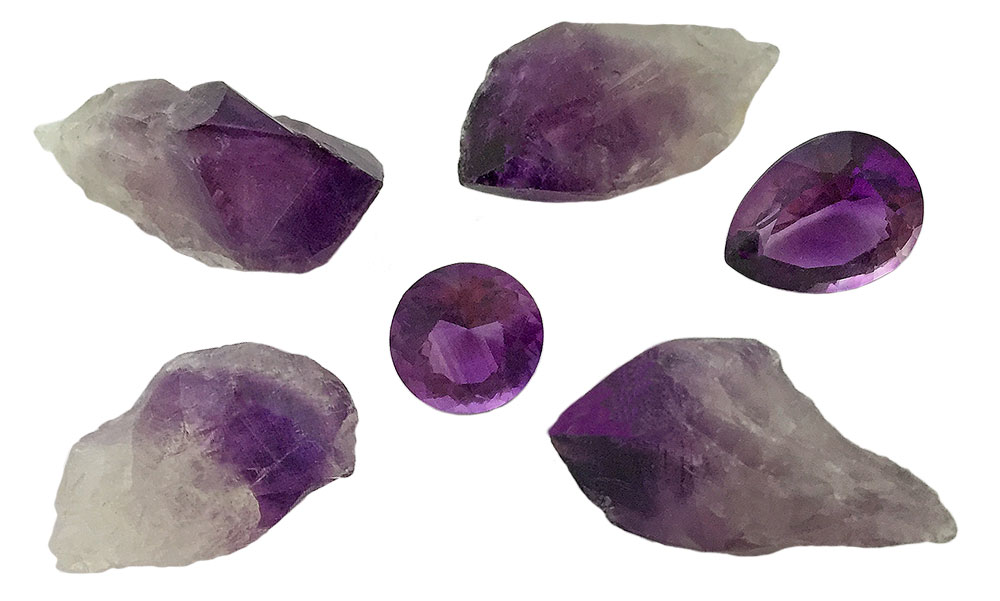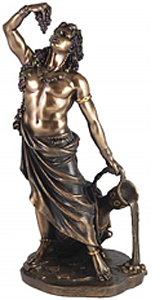The Story Behind February’s Birthstone: Amethyst

We all know that distinctive rich purple hue of Amethyst when we see it. It exudes an air of confident femininity, elegance and grace. It never fails to catch my attention when I see it, both in its raw form and when mounted in a beautiful piece of jewellery. You probably know that it is the birthstone of February, the zodiac stone for Pisces, and the gemstone for the 6th wedding anniversary.
However its not just these traditions and its colour that has made it a popular gemstone. In fact, it has an incredibly rich history with an allure that extends from ancient religion to Greek mythology; from the rings of Cardinal Bishops to royal jewellery collections all around the world. It has also been a favourite with historic figures from Egyptian royalty to Catherine the Great, who sent thousand of workers to the mines in the Ural Mountains to search for the best quality Amethyst, thus creating the “Siberian” grade.

Amethyst in Greek Mythology
The legend of the origin of Amethyst comes from a Greek myth. Dionysus (known as Bacchus to the Romans), the god of wine, intoxication and debauchery, was angered one day by an insult from a mortal. Enraged, he swore revenge and summoned veracious tigers to devour the next mortal that would cross his path.
Along came the unsuspecting Amethyst, a beautiful young maiden on her way to pay tribute to the goddess Diana. To protect her, Diana turned Amethyst into a statue of the purest white quartz. Realising the ruthlessness of his actions, Dionysus wept tears of wine in remorse. His tears stained the quartz, creating the beautiful purple hue that we associate with the gemstone today.
This powerful legend explains why Greeks wore Amethyst to protect against drunkenness. Indeed, the name of this gemstone is derived from the ancient Greek word “amethustos” meaning “not intoxicated” or “without drunkenness”. For the same reason, drinking from cups carved from large Amethyst crystals became popular.
Ancient Folklore and Religion
Other ancient cultures have added to the lore surrounding Amethyst. Roman matrons found that wearing Amethyst would help retain the affections of their spouse, while the Emperor’s soldiers would wear it as an amulet for protection in battle. Leonardo Da Vinci listed many virtues of the stone, including its apparent power to dissipate evil thoughts, sharpen intelligence, and render men shrewd in business.
Because Amethyst was thought to encourage celibacy and symbolise piety, it was very important in the ornamentation of Catholic and other churches in the Middle Ages. Amethyst was, in particular, considered to be the stone of bishops and some still wear it in their ceremonial rings. It is also found in many ornate crosses and the well-known papal ring of Fifteenth Century Italy. Buddhists believe that Amethyst enhances the peace and tranquility of meditation, making it the preferred choice for Tibetan rosaries even today.
My list of trivia associated with this stone is aptly completed with the tale of Saint Valentine. According to romantic tales, this Saint was a kind-hearted Roman priest who married young couples against the wishes of Emperor Claudius II, and was beheaded for this deeds on 14th February. Legend says that the Saint wore an Amethyst ring with the figure of his assistant, Cupid, engraved on it. Because of this, the colour purple was thought to signify true love. It is no coincidence that Valentine’s Day is celebrated in February and that Amethyst is chosen as its birthstone.
Why not switch things up this Valentine and let purple be the new red! Here are two signature pieces from the SHIKHAZURI one of a kind collection of jewellery to get you inspired.

